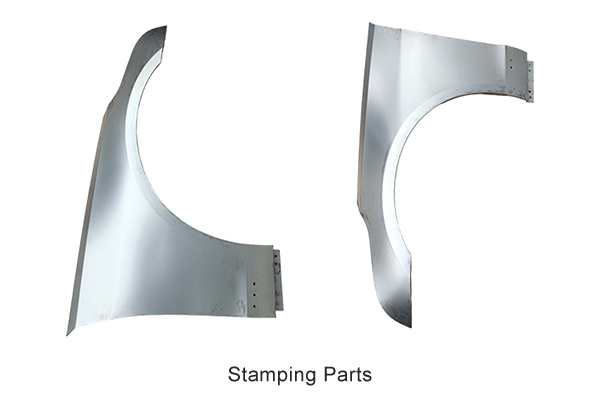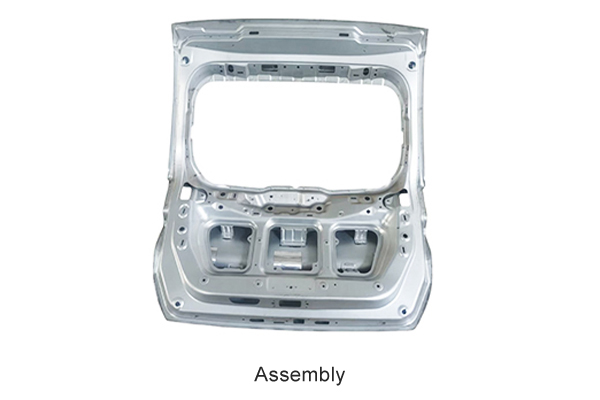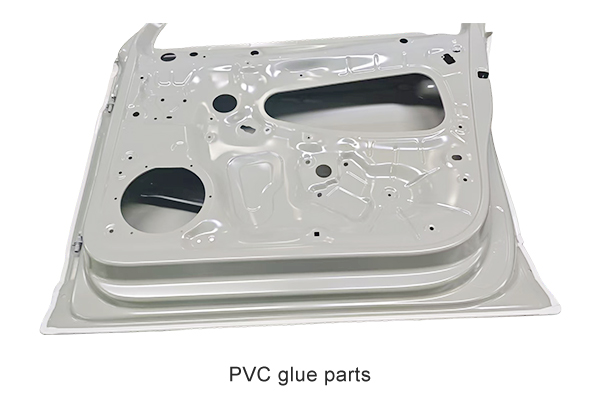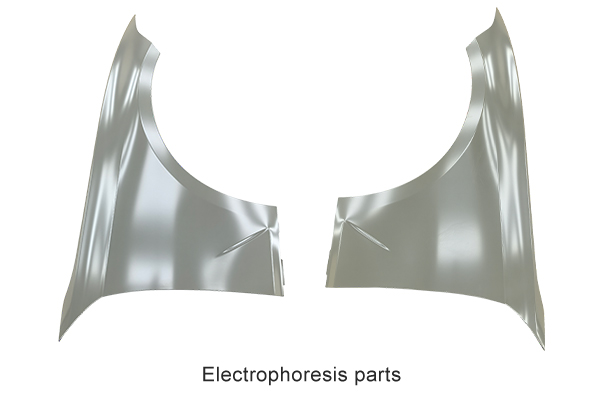How does automobile cover hydraulic press processing improve the manufacturing precision of parts?
Release Time : 2025-05-29
Automobile cover hydraulic press processing has shown significant advantages in improving the manufacturing precision of parts. With the continuous improvement of the automotive industry's requirements for product quality and performance, traditional manufacturing methods have been difficult to meet the needs of modern manufacturing. The hydraulic press, with its advanced technology and precise control capabilities, has greatly improved the manufacturing precision of parts while ensuring the high-quality production of covers.
First of all, hydraulic machine processing achieves high-precision forming effects through precise pressure control. During the production process of covers, the hydraulic press can provide stable and adjustable pressure, so that the metal sheet can be deformed evenly in the predetermined mold, avoiding thickness differences or shape deviations caused by uneven pressure. This precise pressure application not only ensures the consistency of each cover, but also effectively reduces the warping and deformation problems caused by uneven stress distribution inside the material. Therefore, the use of hydraulic machine processing can ensure that each finished product achieves extremely high dimensional accuracy and shape accuracy.
Secondly, hydraulic machine processing has excellent repeatability and stability, which is one of the key factors to improve manufacturing accuracy. Advanced hydraulic systems are equipped with highly sensitive pressure sensors and feedback control systems that monitor and adjust pressure output in real time throughout the stamping cycle to compensate for any changes that may affect the accuracy of the final product. Whether in a single operation or in continuous batch production, hydraulic presses can maintain highly consistent working conditions, ensuring the same quality of each batch of products. This stable performance is particularly important for the automotive industry, which requires large-scale production, as it is directly related to product reliability and interchangeability.
Furthermore, the mold design and manufacturing technology used in hydraulic machining is also an important part of improving the manufacturing accuracy of parts. In order to adapt to the complex and changing shape requirements of cover parts, modern hydraulic presses are usually equipped with high-precision, customized molds. These molds are carefully designed and manufactured to achieve micron-level detail reproduction. In addition, some high-end hydraulic presses can also be quickly replaced and adjusted according to different workpiece requirements, greatly improving the flexibility and responsiveness of the production line. With the help of these precision molds, hydraulic presses can accurately transfer complex three-dimensional structures to metal sheets to ensure that the geometry of the cover parts meets the design requirements.
Not only that, hydraulic machining also has excellent surface treatment capabilities, which helps to improve the overall quality and appearance of the cover parts. During the hydraulic forming process, the application of appropriate lubricants and mold surface treatment technology can reduce the friction between the material and the mold and prevent scratches and adhesion. At the same time, the hydraulic press can achieve a slow and steady loading process, which helps to form a smoother and flatter surface and reduce the amount of grinding and polishing in subsequent processing steps. High-quality surface finish not only enhances the aesthetics of the product, but also provides a good foundation for subsequent processes such as painting.
In addition, the advantages of hydraulic machine processing in temperature control cannot be ignored. In certain specific cases, such as processing high-strength steel or aluminum alloys, proper control of the forming temperature can significantly improve the forming properties of the material, thereby improving the dimensional accuracy of the parts. The hydraulic press can adjust the temperature of the mold and the workpiece through an integrated heating device or cooling system to ensure that the material is in the best condition throughout the forming process. This precise temperature management helps to optimize the material flow behavior, avoid shrinkage or expansion problems caused by temperature fluctuations, and further ensure the accuracy of the finished product.
Finally, the combination of hydraulic machine processing and modern digital technology has brought new possibilities for improving the manufacturing accuracy of parts. By introducing computer-aided design (CAD) and computer-aided manufacturing (CAM) technology, hydraulic presses can achieve full process automation control from design to production. Designers can directly import 3D models into the CNC system to automatically generate the optimal processing program, reducing the errors caused by human intervention. In addition, the real-time monitoring system can track the changes in various parameters during the production process and make timely adjustments to ensure that each operation is carried out within a strict tolerance range. This intelligent production method not only improves work efficiency, but also significantly improves the accuracy level of the final product.
In summary, automobile cover hydraulic press processing comprehensively improves the accuracy of parts manufacturing through precise pressure control, excellent repeatability and stability, high-precision mold design, excellent surface treatment capabilities, and advanced temperature management and digital technology. It is not only an indispensable technical means in modern automobile manufacturing, but also an important force to promote the industry to move towards higher quality. With the continuous advancement of technology, it is believed that hydraulic machine processing will continue to exert greater potential in the future and bring more innovations and breakthroughs to the automotive manufacturing industry.
First of all, hydraulic machine processing achieves high-precision forming effects through precise pressure control. During the production process of covers, the hydraulic press can provide stable and adjustable pressure, so that the metal sheet can be deformed evenly in the predetermined mold, avoiding thickness differences or shape deviations caused by uneven pressure. This precise pressure application not only ensures the consistency of each cover, but also effectively reduces the warping and deformation problems caused by uneven stress distribution inside the material. Therefore, the use of hydraulic machine processing can ensure that each finished product achieves extremely high dimensional accuracy and shape accuracy.
Secondly, hydraulic machine processing has excellent repeatability and stability, which is one of the key factors to improve manufacturing accuracy. Advanced hydraulic systems are equipped with highly sensitive pressure sensors and feedback control systems that monitor and adjust pressure output in real time throughout the stamping cycle to compensate for any changes that may affect the accuracy of the final product. Whether in a single operation or in continuous batch production, hydraulic presses can maintain highly consistent working conditions, ensuring the same quality of each batch of products. This stable performance is particularly important for the automotive industry, which requires large-scale production, as it is directly related to product reliability and interchangeability.
Furthermore, the mold design and manufacturing technology used in hydraulic machining is also an important part of improving the manufacturing accuracy of parts. In order to adapt to the complex and changing shape requirements of cover parts, modern hydraulic presses are usually equipped with high-precision, customized molds. These molds are carefully designed and manufactured to achieve micron-level detail reproduction. In addition, some high-end hydraulic presses can also be quickly replaced and adjusted according to different workpiece requirements, greatly improving the flexibility and responsiveness of the production line. With the help of these precision molds, hydraulic presses can accurately transfer complex three-dimensional structures to metal sheets to ensure that the geometry of the cover parts meets the design requirements.
Not only that, hydraulic machining also has excellent surface treatment capabilities, which helps to improve the overall quality and appearance of the cover parts. During the hydraulic forming process, the application of appropriate lubricants and mold surface treatment technology can reduce the friction between the material and the mold and prevent scratches and adhesion. At the same time, the hydraulic press can achieve a slow and steady loading process, which helps to form a smoother and flatter surface and reduce the amount of grinding and polishing in subsequent processing steps. High-quality surface finish not only enhances the aesthetics of the product, but also provides a good foundation for subsequent processes such as painting.
In addition, the advantages of hydraulic machine processing in temperature control cannot be ignored. In certain specific cases, such as processing high-strength steel or aluminum alloys, proper control of the forming temperature can significantly improve the forming properties of the material, thereby improving the dimensional accuracy of the parts. The hydraulic press can adjust the temperature of the mold and the workpiece through an integrated heating device or cooling system to ensure that the material is in the best condition throughout the forming process. This precise temperature management helps to optimize the material flow behavior, avoid shrinkage or expansion problems caused by temperature fluctuations, and further ensure the accuracy of the finished product.
Finally, the combination of hydraulic machine processing and modern digital technology has brought new possibilities for improving the manufacturing accuracy of parts. By introducing computer-aided design (CAD) and computer-aided manufacturing (CAM) technology, hydraulic presses can achieve full process automation control from design to production. Designers can directly import 3D models into the CNC system to automatically generate the optimal processing program, reducing the errors caused by human intervention. In addition, the real-time monitoring system can track the changes in various parameters during the production process and make timely adjustments to ensure that each operation is carried out within a strict tolerance range. This intelligent production method not only improves work efficiency, but also significantly improves the accuracy level of the final product.
In summary, automobile cover hydraulic press processing comprehensively improves the accuracy of parts manufacturing through precise pressure control, excellent repeatability and stability, high-precision mold design, excellent surface treatment capabilities, and advanced temperature management and digital technology. It is not only an indispensable technical means in modern automobile manufacturing, but also an important force to promote the industry to move towards higher quality. With the continuous advancement of technology, it is believed that hydraulic machine processing will continue to exert greater potential in the future and bring more innovations and breakthroughs to the automotive manufacturing industry.








